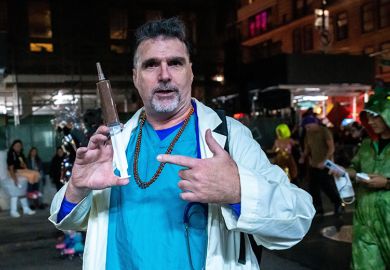Walter Spear, whose work laid the foundations for a key part of today's multibillion-pound photovoltaic industry, died on 21 February, aged 87. His pioneering research in thin film, large area electronics helped to fuel the burgeoning rise of solar energy.
Professor Spear was born in Germany and came to Britain just before the war. He studied at Birkbeck, University of London, where he helped to develop and build the microfocus X-ray generator that contributed to the discovery of the double-helix structure in DNA.
He then joined the academic staff at the University of Leicester where he met his student and future collaborator, Peter LeComber. The two moved to the University of Dundee in 1969, Professor Spear as Harris Professor of Physics, and established the Amorphous Materials Research Group, which was located in a disused textile store. The laboratory bears the name "Jute Shed" to this day.
Spear and LeComber, working as one of the most remarkable and durable partnerships in the history of experimental physics, were generally a step ahead of their rivals, and produced several world firsts. In particular, they made the first amorphous silicon p-n junction, the building block of electronic devices, and showed that it had photovoltaic properties. These properties were soon realised in the form of thin film solar cells by researchers in the RCA laboratories in the US.
In the belief that oil reserves might soon be exhausted, many oil companies began investing in this research. When it became apparent that fears of the immediate end of the oil era were unfounded as new reserves were discovered, oil companies scaled down their efforts considerably.
However, this caused no problem for Professor Spear's group, which soon stunned the world with the first amorphous silicon thin film transistor. This was followed by a demonstration of its use in the active matrix liquid crystal display made jointly at the Royal Signals and Radar Establishment in Malvern. The device is in virtually every notebook display and mobile phone screen in the world. Professor Spear's career led to many international prizes and he was a fellow of both the Royal Society and the Royal Society of Edinburgh. In 1988 he delivered the prestigious Bakerian Lecture to the Royal Society.
When not immersed in his work, Professor Spear had a keen interest in European culture. He was an accomplished cello player, and in his retirement could be found playing in chamber groups around Dundee. He is survived by his wife, Hilda, two daughters, Gillian and Katherine, and two grandchildren.
This is an edited version of an obituary written by Mervyn Rose and Rod Gibson of Dundee's department of electronic engineering, which can be found at www.dundee.ac.uk/pressreleases/2008/prmarch08/spear.html
Register to continue
Why register?
- Registration is free and only takes a moment
- Once registered, you can read 3 articles a month
- Sign up for our newsletter
Subscribe
Or subscribe for unlimited access to:
- Unlimited access to news, views, insights & reviews
- Digital editions
- Digital access to THE’s university and college rankings analysis
Already registered or a current subscriber?



